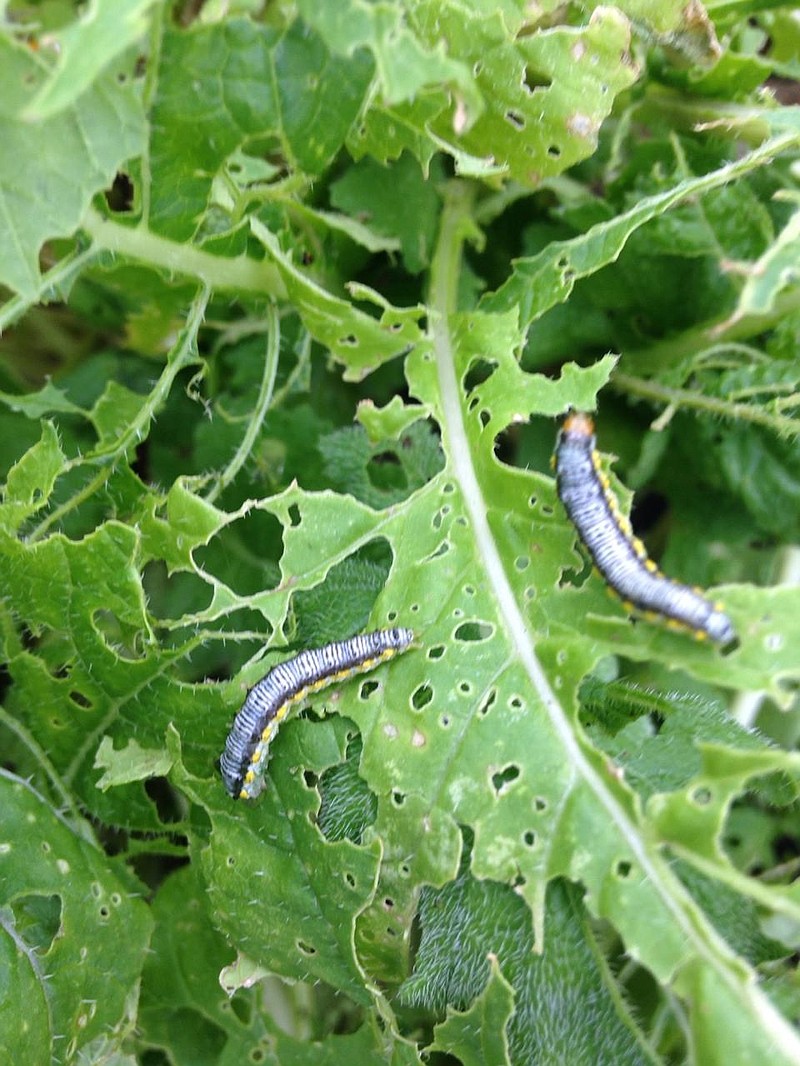Q. This interesting caterpillar is devouring my turnip leaves. What is it and what can I use to have it go away, without spraying something too nasty?
A. Very interesting, I had to send this on to a colleague for help (thanks to Kristin B. Simpson, collections manager of the Enns Entomology Museum at University of Missouri). This caterpillar is the cross-striped cabbageworm, Evergestis rimosalis (Guenée) (family Crambidae), a minor and not often seen pest of Cole crops. There are two natural insecticides you can use that give excellent control on caterpillars. Any with the active ingredient Bacillus thuringiensis or 'BT', such as Dipel for Thuricide would work well, as would those with spinosad (e.g. Captain Jack's Deadbug Brew). Please read the label and follow the instructions.
Q. Roses can smell so nice and some are quite potent and lovely. Why are most sold with little to no fragrance?
A. Beauty has been the driving factor motivating breeders for many years. There are three main groupings: Species (i.e. wild roses); Old Garden Roses (classes in existence before 1867); and Modern Roses (classes not in existence before 1867). Likely 95 percent or more in commercial trade are 'Modern Roses.' According to the American Rose Society website, there are more than 37,000 Modern Roses registered. Society of American Florists annually conducts flower competitions and has three rose classes (standard, garden rose and spray rose). They are rated as follows: color and commercial appeal (10 points), stem and foliage (10 points), bloom form (10 points), bloom size (10 points), and overall quality/presentation (10 points). NOTE - nothing regarding fragrance!
I have noticed some cultivars recently sold that have plant tags noting fragrance, so there is recognition that some consumers prefer fragrant types. That said, the No. 1 rose of all time now is 'Knock Out' (of which there are a number of different colors, etc.). They have little to no fragrance.
Q. What is this grass I see popping up everywhere in fields, roadsides, etc. Is it good for anything?
A. Thanks for sending the photo so we could identify it as Johnsongrass. Originally from the Mediterranean region, it was introduced to North America in the 1800s as a forage/hay alternative. The name "Johnsongrass" refers to Col. William Johnson, who introduced this species to his river-bottom farm in Alabama in the 1840s. Today, Johnsongrass is found in all states except Minnesota, and is considered a noxious weed in 19 states. In Missouri, if there is a very good stand of it, farmers may graze cattle on it or cut and bale it up.
Q. I thought monarch butterflies keep moving north as they have more generations. And then fly south from states further to our north. However, I keep seeing them around; I have milkweed growing around my yard now.
A. Good observation. Missourians for Monarchs has a migration map posted on their website, moformonarchs.org/migration/. It shows the northern half of Missouri as 'summer breeding areas' as opposed to the southern half as 'spring breeding areas.' Thus if the habitat and/or the weather is favorable in Central Missouri, they may stick around the whole summer, building up their population, before heading south in early to mid-October.

